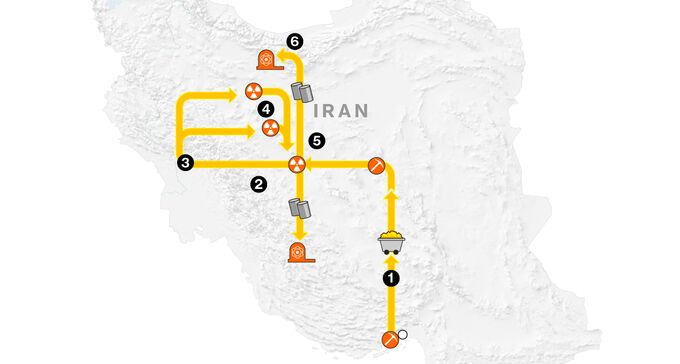
WASHINGTON, D.C. – As tensions rise between the United States, Israel, and Iran, recent satellite imagery reveals the challenges faced in dismantling Iran’s nuclear capabilities. Despite continued military efforts, the fortified nature of Iran’s nuclear sites presents significant obstacles.
Breaking: Satellite Images Show Limited Damage
Satellite images analyzed by experts indicate that after four days of bombardment, Iran’s nuclear facilities have sustained only minor damage. The central enrichment facility in Natanz, located 300 kilometers south of Tehran, shows damage primarily to its electricity infrastructure.
“They did damage but left a lot intact,” said Robert Kelley, a former inspector at the International Atomic Energy Agency (IAEA).
The images, provided by US-based Planet Labs PBC, highlight the difficulties faced by military planners in achieving their objectives without further escalation.
Immediate Impact on International Monitoring
The ongoing conflict has severely impacted the IAEA’s ability to monitor Iran’s nuclear activities. With inspectors sidelined due to ongoing military actions, the agency has lost track of Iran’s highly-enriched uranium stockpile.
“In a time of war, all nuclear sites are closed. No inspections, no normal activity can take place,” stated IAEA Director General Rafael Mariano Grossi.
Key Details Emerge on Iran’s Nuclear Infrastructure
Iran’s nuclear ambitions are supported by a network of interconnected facilities across the country. These sites, manned by thousands of scientists and engineers, are crucial to Iran’s nuclear fuel cycle.
The IAEA reported damage to Isfahan’s central chemical laboratory and other facilities, yet satellite images suggested minimal impact from recent strikes.
By the Numbers
- Iran’s uranium stockpile: 409 kilograms of highly-enriched uranium
- Location of Natanz: 300 kilometers south of Tehran
- Depth of Fordow facility: At least 100 meters underground
Expert Analysis on Military Capabilities
Military experts suggest that permanently disabling Iran’s nuclear sites would require significant resources. The Fordow facility, built into a mountain, is particularly challenging, requiring advanced munitions beyond Israel’s current capabilities.
“Iran’s nuclear program is the brainchild of its war with Iraq during the 1980s,” Kelley explained, highlighting the strategic depth of Iran’s facilities.
Regional Implications and Future Steps
The situation continues to evolve as international stakeholders weigh their options. The United States faces a critical decision on whether to join Israel in further military actions, with significant geopolitical consequences.
As diplomatic efforts remain stalled, the international community watches closely. The IAEA and other agencies continue to call for transparency and cooperation from all parties involved.
With the potential for further escalation, the need for a strategic approach to address Iran’s nuclear capabilities becomes increasingly urgent.







